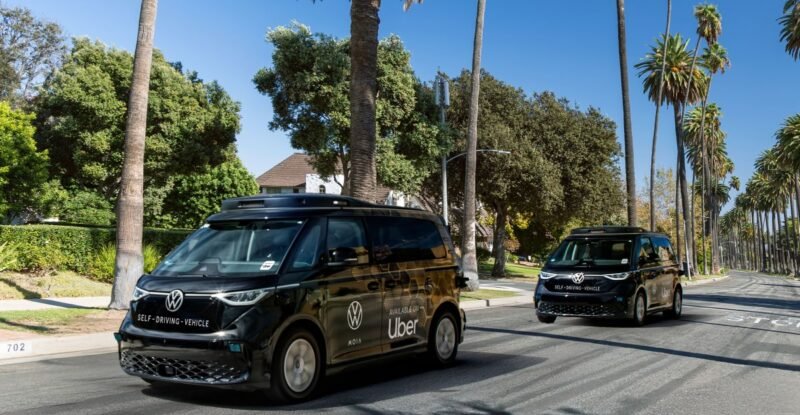Quick Takeaways
-
Autonomous Launch: Volkswagen plans to deploy its first commercial robotaxi service in Los Angeles in 2026, using the electric ID Buzz minivans equipped with self-driving technology developed by its subsidiary Moia.
-
Expansion Goals: The company aims to operate “thousands” of autonomous vehicles in multiple U.S. cities over the next decade, emphasizing urban mobility and ridehailing potential with a long-wheel base version capable of seating at least seven passengers.
-
Safety and Testing: Initial testing will start later this year with safety drivers, while VW waits to secure necessary permits for fully driverless operations, building on years of autonomous testing in the U.S. and Germany.
- Strategic Partnerships: VW’s alliance with Uber fits into the latter’s broader strategy of becoming a comprehensive platform for robotaxis and autonomous delivery vehicles, alongside partnerships with other self-driving technology providers.
Volkswagen’s Bold Move into Robotaxis
Volkswagen may not be a household name in the realm of robotaxis, yet the company has been diligently crafting its self-driving technology for over a decade. This commitment comes to fruition with plans to launch a fleet of autonomous ID Buzz electric minivans on Uber’s ride-hailing platform. The deployment of this service will start in Los Angeles in 2026. VW aims to roll out thousands of these vehicles across multiple U.S. cities within the next decade. The use of spacious minivans, capable of seating at least seven passengers, signals VW’s intent to tap into the growing demand for ride-hailing services.
Testing will begin later this year, featuring safety drivers in the vehicles. VW’s decision to prioritize safety reflects a cautious approach to introducing fully driverless operations, which will only commence after obtaining necessary regulatory approvals. The automaker has already gained experience in the U.S. market, deploying autonomous vehicles in Austin and building on lessons learned from its earlier experiments in Germany. This meticulous preparation bodes well for the eventual launch of a more widespread service.
Shaping the Future of Mobility
VW’s foray into the autonomous vehicle space raises essential questions about the future of urban transportation. Their collaboration with Uber positions the company at the forefront of a burgeoning market. The integration of self-driving technology into a ride-hailing platform showcases how traditional automakers can innovate and adapt to modern challenges. As the industry evolves, partnerships with other autonomous vehicle operators further enhance Uber’s goal of becoming a comprehensive source for robotaxi and delivery vehicle services.
However, the road ahead may not be straightforward. VW has faced setbacks in its autonomous driving journey, including past partnerships that fell through. Still, the company’s commitment to combining advanced technology with manufacturing expertise could prove impactful. As urban areas continue to grow, the demand for efficient and eco-friendly transportation becomes more pressing. The introduction of robotaxis offers potential benefits, including reduced traffic congestion and lower emissions. Ultimately, as we embrace these changes, we must consider their implications for daily life. The journey toward a fully autonomous transportation system is just beginning, and its success will depend on a balanced approach that prioritizes safety, efficiency, and public acceptance.
Continue Your Tech Journey
Explore the future of technology with our detailed insights on Artificial Intelligence.
Explore past and present digital transformations on the Internet Archive.
TechV1

